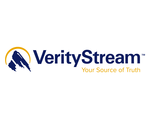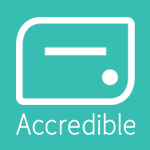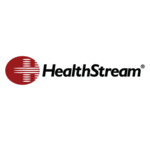Indeed, the majority of credentialing software solutions may be accessed on a variety of platforms and devices. This enables users to access the software from many operating systems, including Windows, Mac, and iOS, as well as from their desktop, laptop, tablet, or mobile phone.This feature makes the credentialing process more fast and efficient by enabling users to view and update information from any location, providing ease and flexibility.
List of 20 Best Credentialing Software
CredentialMyDoc is a hospital credentialing platform. Our innovative software offers a user-friendly interface and advanced features for easy management of providers and payers. Say goodbye to manual paperwork with our efficient form generation and r...Read More CredentialMyDoc
Inovalon is a leading technology solution that revolutionizes healthcare with cutting-edge analytics, advanced software, and extensive expertise. Powered by a vast primary healthcare dataset and a robust cloud-based platform, we deliver superior outc...Read More Inovalon
Certifier is a solution for creating and distributing professional certificates online. Say goodbye to manual processes and hello to a hassle-free way of issuing and managing certificates. With Certifier, you can easily customize and distribute beaut...Read More Certifier
Streamline Verify solution for Exclusion Screening Automation. With a strong reputation since its establishment in 2011, our software has been trusted by over 1,350 licensed customers and 15,000 users across 46 states. Experience the power of our ada...Read More Streamline Verify
CredentialStream is a software that simplifies the credentialing, enrollment, privileging, and evaluation processes for healthcare providers. With a trusted track record in over 3,000 organizations, it enhances patient care by ensuring clinical compe...Read More CredentialStream
Verity for Health Systems and Health Plans is a software solution for streamlined credentialing, compliance, and data analytics. This innovative tool enhances operational efficiency, ensures regulatory compliance, and elevates patient care. With valu...Read More Verity for Health Systems and Health Plans
Expiration Reminder is a credentialing software designed with a user-friendly interface. It streamlines the process of monitoring renewal dates and sending out automated reminders. With a worldwide reach, Expiration Reminder is trusted by more than 1...Read More Expiration Reminder
Accredible is a digital credential platform that enables educational institutions and organizations to easily issue, manage, and monitor credible digital certificates and badges. With user-friendly integrations and advanced personalization features,...Read More Accredible
Modio Health is a leading provider credentialing software that simplifies the management of documents, appointments, and online applications while ensuring top-level security. Our innovative features include license and certification verification, as...Read More Modio Health
STATCred: the leading credentialing solution for healthcare providers. Our advanced technology and expert team simplify insurance enrollment, ensuring seamless integration and compliance. Boost efficiency and revenue cycle optimization with STATCred,...Read More STATCred
Symplr is a software solution for healthcare providers, hospitals, and CVOs. Our SaaS platform offers a range of features and training options, including documentation, webinars, and live sessions, to streamline the process of managing medical staff...Read More symplr
Cortex EDI is a medical and pharmacy billing software used by healthcare professionals nationwide. With its HIPAA compliance and intuitive interface, this software simplifies the billing process for doctors and hospitals. Take advantage of a complime...Read More Cortex EDI
IntelliCred is a medical credentialing software that simplifies the process of accessing provider credentials. Our advanced features, such as certification tracking, document and appointment management, and license verification, make it effortless to...Read More IntelliCred
NetForum is a highly efficient membership management software designed to enhance the operations, member engagement, and revenue growth of associations and non-profit organizations. It has a proven track record of 20 years and offers a wide range of...Read More NetForum
OrcaCred is a credentialing software for healthcare organizations. This powerful tool revolutionizes the credentialing process, allowing providers to dedicate more time to patient care. With its intuitive features, OrcaCred is solution for streamlini...Read More OrcaCred
ROC-P, cloud-based solution that caters to the needs of boards and certifying organizations in diverse industries. This innovative software simplifies the management of candidates, certifications, and credentials, enhancing overall efficiency and pro...Read More ROC-P
Credentialingspectrum is a leading healthcare services provider, catering to over 17 medical billing companies and 600+ healthcare facilities, such as hospitals and medical record departments. Our advanced technology and outsourcing solutions are des...Read More Credentialingspectrum
Say hello to a streamlined credentialing process with symplr Payer. This top-notch provider data management solution offers automated primary source verification for quicker and more accurate provider onboarding. Eliminate the hassle of manual paperw...Read More symplr Payer
Availity is a premier health information network that revolutionizes payer-provider collaborations with innovative solutions for instantaneous data sharing. Our advanced platform streamlines operations, reduces costs, and prioritizes patient welfare...Read More Availity
HealthStream Learning is a platform designed to improve staff development and reduce turnover in healthcare organizations. It offers a range of training resources to ensure high-quality patient care, including advanced tools for learning management a...Read More HealthStream Learning
Learn More About Credentialing Software
- What Is Credentialing Software?
- What Are The Recent Trends In Credentialing Software?
- Benefits Of Using Credentialing Software
- Important Factors To Consider While Purchasing Credentialing Software?
- What Are The Key Features To Look For In Credentialing Software?
- Why Do Businesses Need Credentialing Software?
- How Much Time Is Required To Implement Credentialing Software?
- What Is The Level Of Customization Available In Credentialing Software?
- Which Industries Can Benefit The Most From Credentialing Software?
- Conclusion
What Is Credentialing Software?
For companies that need to monitor and confirm the credentials of their volunteers, contractors, or employees, credentialing software is an invaluable resource. It makes it easier to organize and confirm that people have the credentials, licenses, certifications, and other qualifications needed to meet the organization's norms and criteria. The program provides a centralized platform for safely storing, organizing, and retrieving credentials for easy access.
Additionally, it makes it possible to effectively monitor expiration dates and renewal requirements, removing the possibility of overlooking crucial deadlines. The capacity of credentialing software to automate the verification process is one of its main benefits. Because manual verification may be a laborious and time-consuming process, this helps organizations save time and resources. By guaranteeing that all credentials are correctly validated and current, the software also reduces the possibility of human error.
Top credentialing software offers tools for thorough background checks and compliance monitoring in addition to maintaining individual credentials. For sectors like healthcare and education, where stringent rules and requirements must be fulfilled, this is an essential component. Additionally, reporting and analytics features are frequently included in credentialing software, offering useful information on the state of credentials, compliance levels, and possible hazards.
These characteristics support decision-making and assist companies in maintaining control over their credentialing procedures. It is crucial to take into account aspects like ease of use, customization possibilities, security protocols, and system integration when searching for credentialing software. Organizations can maintain a skilled and reliable staff, guarantee compliance, and expedite their credentialing procedures with the correct software.
What Are The Recent Trends In Credentialing Software?
Current Developments in Software for Credentialing:
1. Cloud-Based Solutions: The move to cloud-based solutions is one of the main trends in credentialing software. Instead of being limited to a single physical server, this enables simpler access and management of credentials from any place. Because cloud-based solutions do not require complicated on-premise infrastructure, they also provide improved security and lower costs.
2. Automation And Artificial Intelligence (AI): Many credentialing software systems have included automation and AI capabilities in response to the growing need for accuracy and efficiency. This lowers the possibility of human error and enables faster credential processing. AI also makes it possible for the program to learn and adjust to new rules and specifications, which streamlines the process overall.
3. Mobile Integration: Including mobile functionality is another trend in credentialing software. This makes credentials accessible while on the go, which facilitates information submission by healthcare experts and providers as well as credential verification by healthcare organizations. Additionally, real-time updates and notifications are made possible by mobile integration, guaranteeing that everyone is aware of the most recent information.
4. Integration With Third-Party Platforms: A lot of credentialing software programs now provide integration with other platforms including licensing boards, specialty certification organizations, and background check services. By removing the need for manual data entry, this integration expedites the credentialing process and lowers the possibility of mistakes or out-of-date information.
5. Improved Data Security Measures: Many credentialing software companies now place a high premium on data security because of the sensitive nature of credentialing information. In order to stop unwanted access or data breaches, recent trends indicate a greater emphasis on putting strong security measures in place, such as encryption, access controls, and frequent data backups.
6. Customized Workflows: Credentialing software now provides configurable workflows to meet the distinct requirements and procedures of various healthcare organizations. This enables a customized approach to credentialing, guaranteeing that particular rules and specifications are fulfilled for every company.
7. Real-Time Monitoring And Reporting: Adding real-time monitoring and reporting features is another trend in credentialing software. This makes it possible to see the credentialing process in its entirety and spot any problems or bottlenecks that need to be fixed. Additionally, it facilitates real-time credential tracking and reporting, increasing responsibility and transparency for all stakeholders.
Benefits Of Using Credentialing Software
The management and upkeep of credentialing procedures in businesses is being completely transformed by credentialing software. Numerous advantages provided by this potent technology can help to increase overall efficiency, save time and money, and streamline processes. The main advantages of utilizing credentialing software will be discussed in this buyer's guide, along with the reasons it is an essential tool for any company trying to improve its credentialing procedures.
1. Centralized And Organized Data Management: The ability to centralize and arrange all credentialing data in a single, safe area is one of the main advantages of utilizing credentialing software. This lowers the possibility of mistakes and duplication by doing away with the necessity for manual document and information tracking. Organizations may simply access, review, and update credentials when all data is easily accessible, guaranteeing adherence to accreditation requirements and regulatory norms.
2. Automated Procedures: Conventionally, credentialing procedures entail laborious and time-consuming manual procedures such document collection and verification, expiration monitoring, and information update. By automating these procedures, credentialing software drastically cuts down on the time and effort needed for credentialing. Additionally, this automation reduces human mistake and guarantees correctness and consistency in all credentialing operations.
3. Improved Cooperation And Communication: Credentialing software provides a platform for instantaneous cooperation and communication between payers, providers, and credentialing administrators, among other important parties. This ensures a smooth and prompt exchange of information by streamlining the credentialing process and closing communication gaps. Credentialing duties may be finished more quickly and effectively when everyone is in agreement, which improves revenue cycles and expedites approvals.
4. Scalable And Customizable Solutions: Every organization has different credentialing needs, and a one-size-fits-all approach might not be sufficient. A more effective and efficient credentialing process is made possible by the configurable features that credentialing software offers, which can be adjusted to the precise needs of the company. Additionally, the software is easily scalable to meet the evolving demands of businesses as they expand and change.
5. Real-Time Monitoring And Reporting: Organizations can watch the status of credentialing tasks and spot any red flags or bottlenecks thanks to the real-time monitoring features that credentialing software offers. This guarantees a seamless and effective credentialing process by enabling proactive management and prompt resolutions. Additionally, the software has strong reporting capabilities that offer useful information and insights for process enhancements and performance assessment.
Important Factors To Consider While Purchasing Credentialing Software?
To make the best choice, there are a number of crucial considerations to make when thinking about investing in credentialing software for your business or organization. These elements include the particular demands and specifications of your company, the software's features and capabilities, user-friendliness, customer service, and cost.
1. Determine Your Organization's Needs: Before investing in any program, you should determine the particular requirements and objectives of your company. Take into account the number of users, the size of your company, and the kind of credentials you must oversee. This will assist you in identifying the features and functionalities that are critical to your company.
2. Features And Capabilities: Credentialing software can provide a number of features and capabilities, including document storage, compliance management, expiration date tracking, credentialing process automation, and report generation. To identify the finest software solution, make a list of the characteristics that are essential to your company and compare them with other options.
3. User-Friendliness: Employees at your company will have a shorter learning curve if the software is easy to use and intuitive. Choose software that has an easy-to-navigate interface, is well-organized, and provides clear instructions for every feature.
4. Customer Service: In the event of any problems or inquiries, it's critical to have dependable customer service, just like with any software. Verify the software provider's customer service by reading reviews or requesting referrals from other businesses.
5. Cost: The cost of credentialing software varies according on the features and functionalities it provides. It's critical to take your company's budget into account and evaluate the costs of various software solutions in order to identify one that is both reasonably priced and offers the capabilities you need.
6. Security: The software's security is among the most important aspects to take into account. Seek software that provides stringent user access controls, safe storage, and data encryption. This will guarantee that private data is shielded from unwanted access.
7. Integration: It's critical to think about whether the credentialing software can easily interact with any other systems or software that your company employs. This will boost productivity by doing away with the necessity for manual data entry.
What Are The Key Features To Look For In Credentialing Software?
For businesses that need to safely monitor and confirm the credentials and qualifications of their partners, contractors, and employees, credentialing software is a vital tool. It might be difficult to go through the features and choose the program that will best suit your needs when there are so many options on the market. Here are the main characteristics you should search for in a credentialing software solution to make the process easier.
1. Workflows That Can Be Customized: Every organization has different credentials management needs and procedures. Seek out a software program that provides workflows that are adaptable to your unique requirements. This will guarantee that the software integrates easily and is in line with your current procedures.
2. Extensive Database: The database is the fundamental component of any credentialing program. You want a system that can house all of the pertinent data in one place, including background checks, training records, licenses, certificates, and employee or contractor profiles. Credential management and tracking will be made possible via an extensive database.
3. Automated Alerts And Reminders: Manually remembering when credentials expire or renew can be a pain. To keep credentials current and compliant, look for software that provides automated warnings and reminders for impending expirations.
4. Integration With Third-Party Systems: Selecting software that can interface with your current systems, such payroll or HR software, is essential to expediting your credentialing procedure. Redundancies will be removed, and data accuracy will increase.
5. Security And Compliance: Strong security measures are necessary because to the sensitive nature of credentialing data. When assessing software, make sure it satisfies all legal and industry standards for data storage and management. 6. User-friendly interface: The efficient and successful usage of the credentialing software depends on a user-friendly interface. To increase user acceptance and reduce training requirements, look for a system with an intuitive interface and simple navigation.
7. Custom Reporting And Analytics: Effective credential management requires real-time data access. To make smarter decisions, look for software that lets you collect and analyze data in real-time with customisable reporting and analytics options. 8. Round-the-clock client service: Any software can have technical problems and questions. Selecting a vendor that provides round-the-clock customer service is crucial to guaranteeing that any issues or worries are promptly resolved.
Why Do Businesses Need Credentialing Software?
Credentialing is a crucial procedure in today's highly regulated company environment for guaranteeing compliance and reducing risks. Companies must continuously check the credentials and qualifications of its workers, contractors, and vendors, particularly those in regulated sectors like healthcare and finance. If done by hand, this can be a laborious and prone to error task, which could result in financial penalties and possible compliance problems.
This procedure is streamlined and automated by credentialing software, which helps companies effectively maintain and validate employee credentials. It serves as a consolidated database that houses all required records and data pertaining to a person's credentials and certificates. This guarantees correctness and consistency in the credentialing process in addition to saving time and effort.
Furthermore, credentialing software frequently includes automated reminders and customisable workflows, which help firms make sure that credentials are renewed on time. This lowers the possibility of financial and legal repercussions and avoids compliance breaches. Additionally, credentialing software provides a degree of security through encryption and role-based access control to safeguard private data and maintain confidentiality.
How Much Time Is Required To Implement Credentialing Software?
Depending on your organization's unique goals and requirements, the time needed to install credentialing software can vary. The implementation procedure can take a few weeks to several months on average. Assessing your present credentialing procedures and figuring out how to incorporate the software into your workflow is the first step.
This may entail finding automation opportunities, optimizing workflows, and making sure the program satisfies all relevant security and compliance requirements. The program will then be set up, customized to your needs, and any current data will be migrated by the implementation team in close collaboration with your organization. This may entail activities including importing provider data, establishing workflows, and creating user accounts.
A key component of installation is training, which guarantees that your staff is knowledgeable about and capable of using the software. Training might take anywhere from a few hours to many days, depending on how complicated the software is. Enough time must be set aside for training in order to guarantee a seamless switch to the new system. To make sure the software is operating correctly and that any problems are fixed before going live, there could be a testing and troubleshooting phase following the initial setup and training.
All things considered, the credentialing software implementation process calls for meticulous preparation, extensive testing, and efficient training. Working closely with the software vendor and allocating sufficient time and resources for the process are crucial for a successful installation.
What Is The Level Of Customization Available In Credentialing Software?
Numerous customization possibilities are available in credentialing software to accommodate the distinct requirements of various businesses. Although the degree of customization offered by credentialing software varies depending on the particular program you select, there are typically a number of important areas that may be adjusted to meet the needs of your company.
1. Flexible Configuration: One of the primary advantages of credentialing software is its adaptability to the unique workflows and processes of your company. This involves tailoring forms, data fields, and workflows to your existing procedures so you don't have to modify your workflow to accommodate the software.
2. User Rights: You might need to provide various users varying degrees of access and rights, depending on the structure of your company. By modifying user roles and permissions with credentialing software, you can make sure that the appropriate individuals have access to sensitive data.
3. Branding: A lot of credentialing software programs let you add your company's logo to the user interface, giving the program a unified, polished appearance. This can improve brand recognition and make the program easier to use for your team members who use it on a daily basis.
4. Integration: A few credentialing programs allow for integration with other programs and systems, such accounting or human resources programs. This minimizes the possibility of errors and human data entry by enabling a smooth data flow between several systems.
5. Reports And Dashboards: Personalized reports and dashboards can offer valuable perspectives on the information gathered by the credentialing program. This enables you to make personalized reports and charts to monitor vital KPIs and indicators for your company.
6. Online Forms: To make the process more effective and user-friendly, a lot of credentialing software programs let you to design and modify online forms that candidates can fill out. To help expedite the procedure, this may additionally include the ability to submit records and supporting documentation. Overall, the degree of customization offered by credentialing software can differ based on the particular program you use, but the majority of solutions provide a high degree of adaptability to your company's requirements. Before making a purchase, it is crucial to carefully go over the customization possibilities and talk with the software provider to make sure it meets the needs of your company.
Which Industries Can Benefit The Most From Credentialing Software?
A useful tool for many businesses that need labor management and compliance is credentialing software, sometimes referred to as healthcare credentialing software. The process of confirming and keeping track of the qualifications, licenses, and certifications of workers, independent contractors, and suppliers is streamlined by this program.
1. Healthcare Sector: One of the biggest advantages of credentialing software is the healthcare sector. Managing and manually confirming the credentials of a vast and diversified workforce that includes doctors, nurses, allied health professionals, and administrative staff may be a laborious and time-consuming process. This procedure is automated by credentialing software, which guarantees that all staff members have current credentials and adhere to legal requirements.
2. Government Organizations: Credentialing software can also be very helpful to government organizations, particularly those that are in charge of regulating healthcare providers. By using this software, these organizations may monitor and confirm the credentials of medical professionals, making sure they fulfill the requirements and keep their credentials throughout their careers.
3. Educational Institutions: To keep track of the qualifications of their instructors, staff, and students, educational institutions like medical schools and nursing programs might use credentialing software. This guarantees that only eligible candidates with current qualifications may take part in these programs.
4. Human Resources: Human resources departments across a range of businesses can also benefit from credentialing software. Keeping track of employees' credentials by hand can be difficult when they have a variety of roles and responsibilities. By automating the verification and monitoring of credentials, credentialing software streamlines this process and frees up HR experts to concentrate on other crucial duties.
5. Financial Institutions: Credentialing software can be revolutionary in the financial industry, where compliance standards are stringent and ever-changing. It assists in monitoring staff certificates and licenses, guaranteeing that the organization complies with legal requirements.
6. Legal Industry: Professionals in the legal field, including attorneys and paralegals, must maintain their credentials and meet certain requirements. In order to maintain compliance and steer clear of any possible legal problems, credentialing software can help law firms and legal departments manage and check the credentials of their staff.
Conclusion
In conclusion, choosing the best credentialing software for your company is an important choice that needs to be carefully thought out. Before comparing various software choices, it is critical to determine your unique needs, preferences, and financial constraints. You may make an informed choice that supports the aims and objectives of your company by being aware of the features, advantages, and drawbacks of each piece of software.
When selecting a credentialing program, some important considerations include its capacity to optimize procedures, guarantee regulatory compliance, boost productivity, and offer a flawless user experience. To guarantee a seamless transition and continuing maintenance, it is also critical to evaluate the software's implementation procedure and customer service.
In order to gather different viewpoints and choose software that satisfies the needs of every department, it is also a good idea to include all pertinent stakeholders in the decision-making process. Reading reviews, asking for samples, and getting referrals from other businesses that have used the program can also be helpful.
You may reduce your selections and choose the best credentialing software that not only fits the requirements of your company but also enhances its reputation and overall performance by adhering to these tips. We hope that this buyer's guide has helped you make an informed choice by offering insightful information.
Credentialing Software FAQ's
Can Credentialing Software Be Accessed Across Multiple Devices And Platforms?
Is Credentialing Software Future-Proof And Adaptable To Emerging Technologies Like Ai, Blockchain or Iot?
Indeed, contemporary credentialing software is made to be flexible and future-proof, able to adjust to new technologies like blockchain, artificial intelligence, and the Internet of Things. These software programs make use of sophisticated programming methods and adaptable frameworks that facilitate new technology integration.
Software suppliers are constantly updating their products to accommodate the ongoing changes in the credentialing process. This guarantees that businesses may stay abreast of the most recent developments and preserve a competitive advantage in their hiring procedures.
Is There A Free Trial Offered To Assess Credentialing Software Before Committing?
Indeed, a free trial period is provided by many credentialing software providers so that prospective clients can try the program out before committing. This enables users to become acquainted with the software's features and capabilities and assess whether it suits their needs.Before the trial period starts, some businesses even provide a free consultation or demo to make sure the program is a good fit for the user's company.
Does Credentialing Software Offer Data Security Features And Meet Regulatory Compliance Standards?
Indeed, credentialing software provides strong data security safeguards to guarantee that private data is protected. In order to protect patient data, it also complies with stringent regulatory compliance standards, such as HIPAA and GDPR. To stop illegal access and data breaches, this includes encryption, firewalls, two-factor authentication, and frequent data backups. The software is also updated and audited on a regular basis to satisfy changing compliance standards.
Can Credentialing Software Integrate Seamlessly With Existing Tools And Platforms?
Indeed, the majority of credentialing software programs are made to work in unison with current platforms and technologies. Because all pertinent information can be accessed and maintained in one location, this makes the process more streamlined and efficient.
Additionally, integration with current platforms and tools removes the need for manual data entry, which saves time and lowers the possibility of errors. In order to customize the integration to meet particular needs and requirements, numerous credentialing software suppliers also give customization possibilities.






















